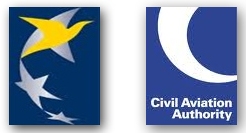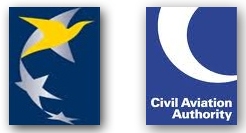EASA To Relax GA Regulation..?
 When the EASA meeting board met on 13 March 2012, one of the items on their agenda was the regulation of General Aviation. The discussion revolved around the proposal as to whether a fresh look needed to be taken on the regulation of GA (General Aviation) within the EASA system.
When the EASA meeting board met on 13 March 2012, one of the items on their agenda was the regulation of General Aviation. The discussion revolved around the proposal as to whether a fresh look needed to be taken on the regulation of GA (General Aviation) within the EASA system.
The Board agreed that although the subject was complex and difficult, action needed to be taken because there were serious risks that GA would significantly decline and/or that non-compliance would increase.
It was further agreed that the acceptable level of risk for GA must be higher than that for Commercial Air Transport Operations, that more effort was needed to avoid mixing regulations for these different kind of operations and that the simplicity and accessibility of GA rules should be increased.
As a result of these conclusions, a small group of experts (around 10 maximum) is to be set up, under the leadership of the Deputy Chair to the Board (Maxime Coffin), comprised of Agency, stakeholder, NAA and Commission experts to develop broad top-level guidelines for how GA could more effectively and proportionately be regulated.
This recent development may provide many GA pilots with a glimmer of hope that EASA will act positively to ensure the regulations become clearer and simpler to adhere to.
Further information can be found through the CAAs Information Notice IN–2012/055. We look forward to monitoring this with interest and will report back with their latest developments once published.
New UK – French Recreational Agreement
 The UK Civil Aviation Authority (CAA) announced on the 15 March 2012 that following agreement with the French regulator, the Direction Générale de l'Aviation Civile (DGAC), pilots of UK-registered amateur built aircraft and other listed types flying to France can now do so for up to 28 days through a general exemption. Previously pilots were required to make individual applications to the DGAC and also inform the CAA prior to each flight to France.
The UK Civil Aviation Authority (CAA) announced on the 15 March 2012 that following agreement with the French regulator, the Direction Générale de l'Aviation Civile (DGAC), pilots of UK-registered amateur built aircraft and other listed types flying to France can now do so for up to 28 days through a general exemption. Previously pilots were required to make individual applications to the DGAC and also inform the CAA prior to each flight to France.
The UK Light Aircraft Association and the French Recreational and Sport Building Association were also involved in the discussions, which offer reciprocal arrangements for French pilots. The agreement comes into effect immediately.
Access is subject to compliance with a small number of conditions, such as the aircraft being registered and having a valid airworthiness certificate. Some non-ICAO compliant aircraft, such as ex-military aircraft types, remain excluded from the agreement and aircraft that do not qualify will continue to need to apply for an individual exemption as will aircraft seeking to stay beyond 28 days.
The CAA has also taken the opportunity to complete a wider review of the agreement which is detailed in Generic Concession No.6 (GC6, previously Airworthiness Notice 52), specifically the need to notify the CAA prior to making a trip via a web address with the aircraft details. This requirement has now been removed further simplifying the process for pilots.
GC6 provides a general exemption for certain amateur built aircraft in line with the 1980 European Civil Aviation Conference (ECAC) recommendation which sought to establish free movement of amateur built aircraft across Europe. It addresses the policy for foreign (non-UK) registered non-ICAO compliant aircraft to access UK airspace and the document has been revised to include details of the new agreement.
DGAC France has issued a document on the agreement under the ‘Arrêté du 20 Février 2012’ and this has been published in the French ‘Journal Officiel’ reference NOR: DEVA1201924A.
Source: UK CAA Newsroom
Carburettor Icing
 The following extract has been taken from GASIL, Issue 10 of 2011. Available from www.caa.co.uk/gasil.
The following extract has been taken from GASIL, Issue 10 of 2011. Available from www.caa.co.uk/gasil.
"According to a report by the BFU (German AAIB), a Robin DR315 was flying below cloud at low altitude when the engine started losing power. The power continued to reduce and the aircraft was destroyed when it collided with a wood during the ensuing forced landing on a road.
The report notes that the German Met Office reported that the temperature and dew point were close together, indicating high humidity, so conditions were favourable for carburettor icing. It seems the pilot had selected carburettor hot air after he noticed the loss of power, but the selection seemed to make the power loss worse, so he selected COLD again. According to the report, the pilot had once been told by a mechanic that selecting carburettor hot air in his aircraft was “completely useless”.
SafetySense leaflet 14, ‘Piston Engine Icing’, available like all such leaflets free for download from the CAA’s website www.caa.co.uk/safetysense gives advice on the subject. It notes that if carburettor icing is present, selection of hot air is likely to cause an apparent increase in rough running as the ice melts and passes through the engine. If this happens the temptation to return to cold air must be resisted so that the hot air has time to clear the ice. The leaflet also notes that air humidity is likely to be high close to cloud base. If we find ourselves cruising close to cloud base, we should not only check carburettor heating frequently, but should consider keeping carburettor hot air selected in the cruise until we need a high power setting."
Fairoaks GASCo Safety Evening

The General Aviation Safety Council (GASCo), in partnership with the CAA, provide safety evenings which give general aviation pilot's an opportunity to develop their knowledge and understanding of aviation safety matters.
This year, the event at Fairoaks will be held in the cafe / Flight Centre building on Thursday 5 April at 19:00. There will also be a presentation on the Olympic Airspace during the evening and the opportunity to ask questions to representatives of GASCo and the CAA.
As a subsidised event, there is no cost for entry and the bar will also be open throughout the evening for a catch-up with your fellow aviators!
Thursday 5 April 2012 19:00 - 22:00
We look forward to welcoming as many pilots as possible - both licenced pilots and those in training.
IMC & EASA Changeover

**A more recent post regarding the IMC & EASA changes is now available.**
In response to requests for information concerning the IMC and the proposed EASA changes, the CAA have issued an IMC Interim Statement.
UK Issued JAR-FCL Licence Holders
In brief, for holders of a UK issued JAR-FCL Licence, the IMC rating must be added to the licence by 30 June 2012. After this date, the IMC privileges can then be exercised on the JAR-FCL licence up until 8 April 2014. Applications for the IMC made after 30 June 2012, will have to be issued on a separate UK only licence.
After the EASA changeover date on 8 April 2012, any JAR-FCL licence when renewed or amended by the CAA, will be automatically converted to the new Part-FCL licence.
The ability to use the privileges of the IMC after 8 April 2014 OR on this new Part-FCL licence is yet to be determined although the CAA is currently in negotiations with EASA. It is expected however that the privileges of the IMC, as far as possible, will have a certain level of 'grandfather' rights.
UK Non-JAR-FCL Licence Holders (Except NPPL)
There is no restriction on adding the IMC rating to the licence for the foreseeable future. The IMC privileges can then be exercised on the UK Non-JAR-FCL Licence until 8 April 2014.
After the EASA changeover date of 8 April 2012, the UK Non-JAR-FCL Licence will need to be converted to the new Part-FCL Licence, through an application to the CAA, before 7 April 2014.
The ability to use the privileges of the IMC after 8 April 2014 OR on new Part-FCL Licence is yet to be determined although the CAA is currently in negotiations with EASA. It is expected however that the privileges of the IMC, as far as possible, will have a certain level of 'grandfather' rights.
*Please note that the above is our interpretation of the changes. Please consult official CAA / EASA publications for the most accurate and up-to-date information.
EASA Licensing: 8 April 2012
 During 2012, pilot licencing and medical rules will change as new European (EU) legislation comes into force. The introduction of EASA licences will see the biggest change in pilot licencing since the introduction of JAR licences 12 years ago. The key upcoming date is 8 April 2012, when the changeover process begins.
During 2012, pilot licencing and medical rules will change as new European (EU) legislation comes into force. The introduction of EASA licences will see the biggest change in pilot licencing since the introduction of JAR licences 12 years ago. The key upcoming date is 8 April 2012, when the changeover process begins.
The CAA have published a quick reference guide that provides an overview of the effects that the changes will have. The CAA is strongly recommending all qualified and trainee pilots take the time to read the guide at the earliest opportunity.
For all information relating to the switch, go to www.caa.co.uk/eupilotlicensing.
A Quick Summary
The majority of recent licence holders will have a UK Issued JAR-FCL Licence. These licences will automatically assume the privileges of the new EASA equivalent (Part-FCL) licence from the 8 April 2012 onward. After this date, when they are next renewed at the end of the 5 year validity period, the CAA will re-print the licence as one of the new Part-FCL licences. The new EASA licences have a lifetime validity.
Another common licence type is the UK CAA Lifetime licence (A UK Non-JAR-FCL Licence). These licences will NOT automatically assume the privileges of the new EASA Part-FCL Licence from the 8 April 2012. Instead, licence holders have between 8 April 2012 and 7 April 2014 to apply to the CAA to convert their licence to the new EASA licence. If this has not been completed by the 7 April 2014, the holder will be restricted to fly only certain aircraft types.
Finally, holders of NPPL licences will be able to continue using the licence until 7 April 2015. After this date, if you want to fly an EASA aircraft then you will need to convert to an EASA licence. At present, there is no conversion agreed that allows you to obtain an EASA LAPL or PPL based on an NPPL, although the CAA are currently negotiating on this conversion criteria which will be published once finalised.
*Please note that the above is our interpretation of the changes. Please consult official CAA / EASA publications for the most accurate and up-to-date information.
